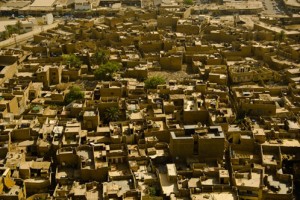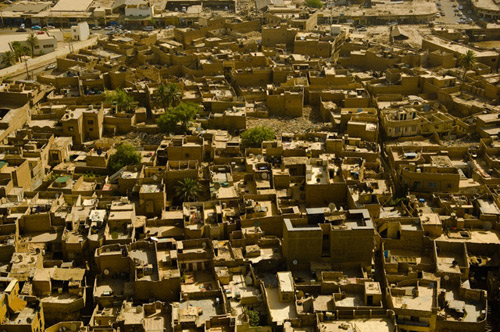Baghdad in Iraq
 The lands along the Tigris and Euphrates rivers are home to some of the most ancient human civilizations. Since antiquity, there emerge, flourish and decay not one or two great cultures. Heir of a great past and is today the capital of Iraq – Baghdad, which is filled with so many mysterious facts and historical events that hardly a life would be sufficient to know the greatness of Persian culture.
The lands along the Tigris and Euphrates rivers are home to some of the most ancient human civilizations. Since antiquity, there emerge, flourish and decay not one or two great cultures. Heir of a great past and is today the capital of Iraq – Baghdad, which is filled with so many mysterious facts and historical events that hardly a life would be sufficient to know the greatness of Persian culture.
Baghdad today is only a pale reflection of what was in the past. In spite of the conflicts, this city is bringing a large history in its heart and one Asia Travel, should not miss it. The military conflicts in the region of Iraq’s recent history also affect the negative outlook, which today is Iraq. Baghdad is the largest village in this Asian country and second largest city in Southwest Asia after Tehran.
Located in central-western part of Iraq, Baghdad, lies on the Tigris River. From here the river Euphrates is only around 50 kilometers. This former medieval capital of the Abbasid Caliphate of today has a population of about 7.5 million people. Baghdad has called round town and its name derives from the Persian Bag-dad, which means “God given” or Bag-To-Doo, which translates sounds like “Garden of God.” The story begins somewhere in Baghdad in the 8th century.
According to legend, the second caliph of Iraq Dzhaafar Abu al-Mansur, wanted to build a new capital for themselves in these places have ever evolved ancient civilizations of Sumer and Babylon. With a hard task to build a city, an unprecedented land, undertook was the most eminent master. The designer offered his master to build a city in the form of a circle (hence the name of today’s Baghdad). This geometric shape of the city plan would allow all the residents of the caliph to be at equal distance from the rulers palace.
This occurred Baghdad with its round shape and its two main separate parts – Imperial (central) part and shopping districts surrounding the palace area and located between the wall surrounding the palaces and outside. In medieval Baghdad became the capital of Abbasside Empire. Somewhere around the 10th century the population of Baghdad has been between one and two million people.
More from Baghdad before it was an important commercial and strategic crossroads. You crossed the main road to Syria and Egypt, Iraq and North Persia. Were delivered by sea from China and India, exotic spices and beautiful fabrics in Baghdad. The central market in Baghdad – “ace Shapher Suk” (Copper market) is where constantly teeming with people and goods. Do not miss this great commercial center, where you to shop a variety of fruits, vegetables, fabrics, local handicrafts, which in some places is made literally turn your eyes. Neighborhoods on the west side of the river in Baghdad are richer than those of the east.
Although there are many parks and green spaces in the city often rampant sandstorms. Today the National Library in Baghdad has been left almost nothing of the vast treasure that she holds. Thousands of ancient manuscripts in the National Library were destroyed in 2003, the National History Museum with its priceless collection of artifacts was also robbed at invading coalition army in the same year.
One of the most remarkable buildings in Baghdad Abbasid Palace. This palace dates from the 12th century or 13th century. Palace of the apse is located in the historic center of Baghdad, it is very close to other important historical buildings such as schools and Sarah Al-Mustansiriyah, which also dates from the Middle Ages.

